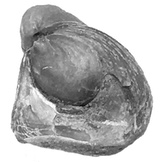Parasequences
Definition
Parasequences are defined as a relatively conformable succession of genetically related beds or bedsets bounded by marine flooding surfaces and their correlative surfaces. Relatively conformable means that although a parasequence may contain brief interruptions in deposition (diastems), it contains no substantial periods of erosion or non-deposition. Genetically related means that all facies within a parasequence were deposited in lateral continuity to one another, that is, Walther’s Law holds true within a parasequence. The flooding surfaces that bound parasequences are the critical part of the definition; flooding surfaces are sharp contacts that separate underlying shallower-water facies from overlying deeper-water facies.
In addition, parasequences commonly have additional characteristics, but these are not part of the definition, and they are not required. For example, most parasequences are asymmetrical shallowing-upward sedimentary cycles, that is, the shallowing-upward portion is much thicker than any deepening-upward portion. In addition, most parasequences tend to be meters to a few tens of meters thick. There are many exceptions to both of these.
Facies relationships
Facies within parasequences are developed in predictable vertical order. For example, on a siliciclastic wave-dominated coast, four facies are commonly present in a fixed vertical order (shown below). A parasequence that spanned all of these facies would begin with bioturbated offshore mudstone, pass through storm beds of the lower shoreface, continue through the trough-cross-bedded upper shoreface, pass upwards into the seaward-inclined laminae of the foreshore, and be capped by a backshore or coastal plain coal bed.
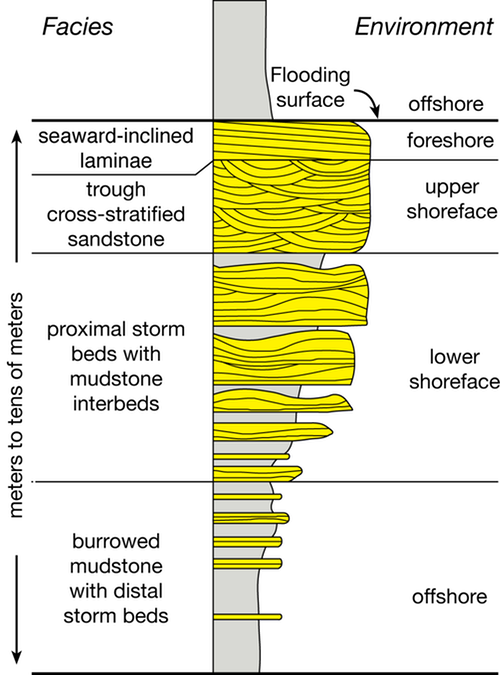
Schematic parasequence developed on a wave-dominated coast, adapted from Van Wagoner et al. (1990)
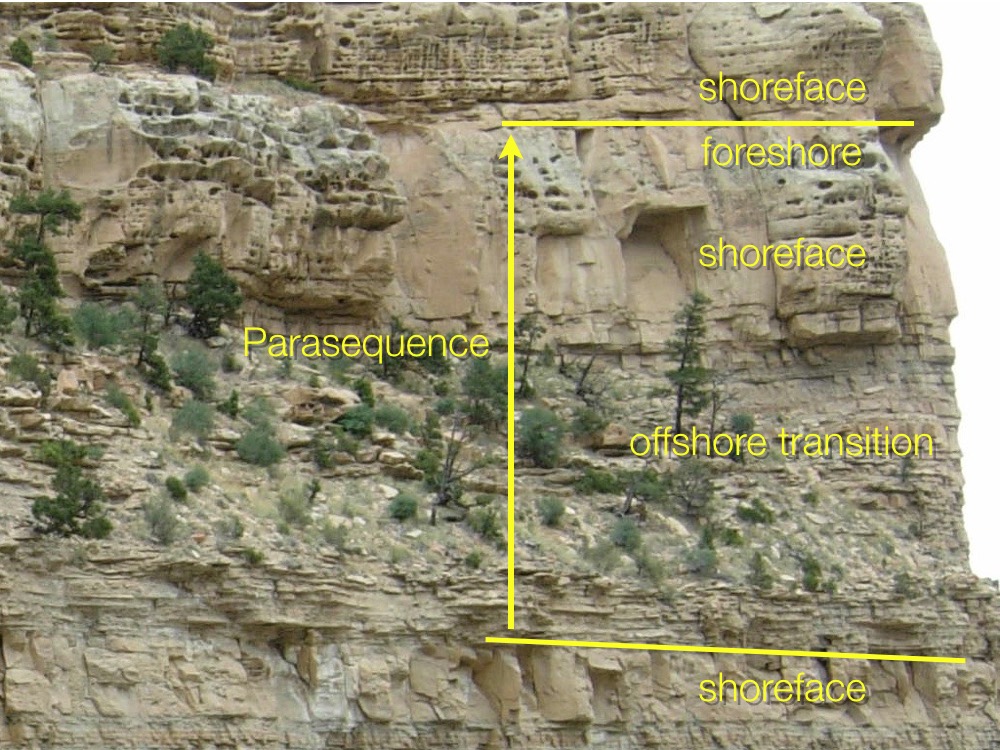
Parasequence developed along a wave-dominated coast (Cretaceous Blackhawk Formation, Helper, Utah)
A single parasequence might not have all of these facies, but those present would occur in an order predictable from Walther’s law. For example, a sandy wave-dominated parasequence might include only offshore and lower shoreface facies, or only upper shoreface, foreshore, and coastal plain facies, but offshore facies would not be overlain by coastal plain facies within a single parasequence.
A parasequence along a deltaic coastline (below) shows a similar coarsening-upward succession, although it would differ in the sedimentary structures developed.
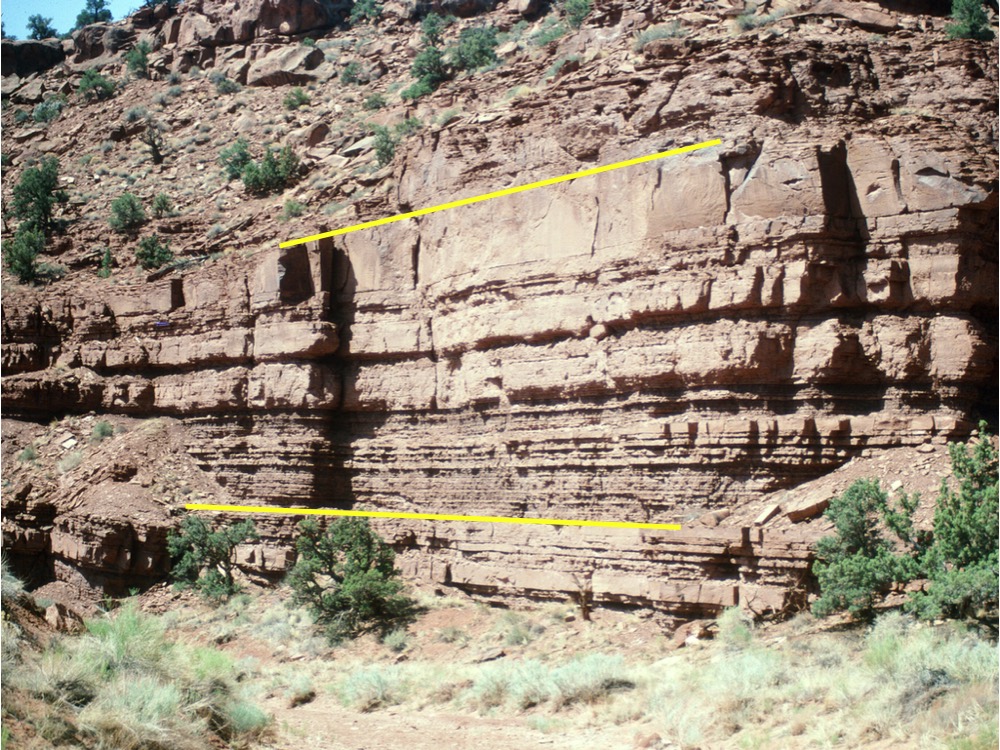
Coarsening-upward parasequence developed along a deltaic coastline, with flooding surfaces indicated by yellow lines (Torrey Member, Triassic Moenkopi Formation, Capitol Reef National Park, Utah). The trees in the foreground are approximately 1 meter high.
A parasequence developed on a muddy siliciclastic shoreline (below) would have a different suite of facies, but they would also be arrayed vertically in a shallowing upward order and facies relationships would obey Walther’s Law. A typical muddy shoreline parasequence would start with cross-bedded subtidal sands, continue with interbedded bioturbated mudstones and rippled sands of the intertidal, and pass upwards into entirely bioturbated and possibly coaly mudstones of the supratidal.
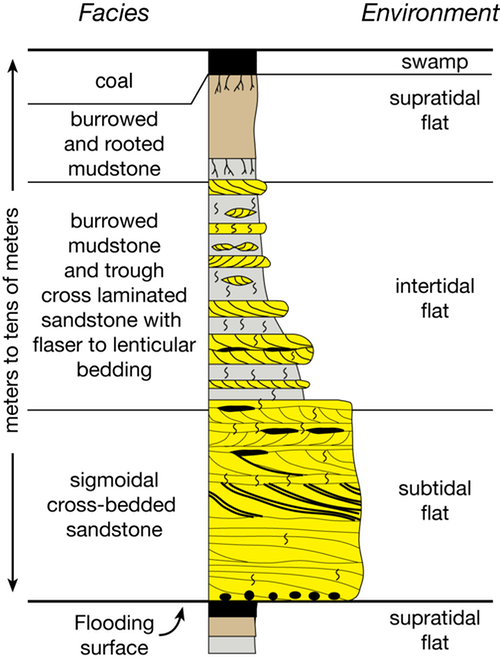
Schematic parasequence developed on a tidal-flat coast (muddy coast), adapted from Van Wagoner et al. (1990)
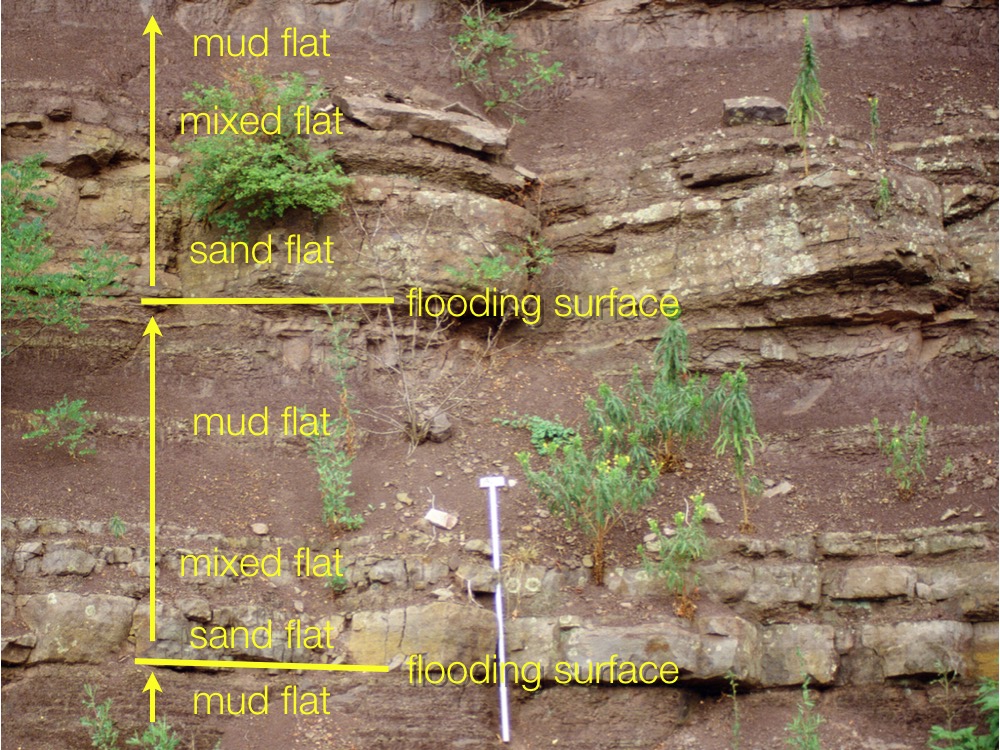
Upward-fining tidal-flat parasequences and flooding surfaces (yellow lines), Ordovician Juniata Formation, Germany Valley, West Virginia. Jacob staff is 1.5 m.
Flooding surfaces
The flooding surfaces that define the top and base of a parasequence are abrupt contacts of relatively deeper-water facies lying directly on top of relatively shallow-water facies (shown below). Rocks lying above and below a flooding surface commonly represent non-adjacent facies, such as offshore shales directly overlying foreshore sands or prodeltaic shales directly overlying distributary mouth-bar sands. Thus, Walther’s Law cannot be applied across flooding surfaces. Given that many parasequences are meters to tens of meters thick, this radically reduces the scale at which Walther’s Law can be applied. Cases where Walther’s Law has been applied to sections hundreds to thousands of meters thick are nearly always incorrect.
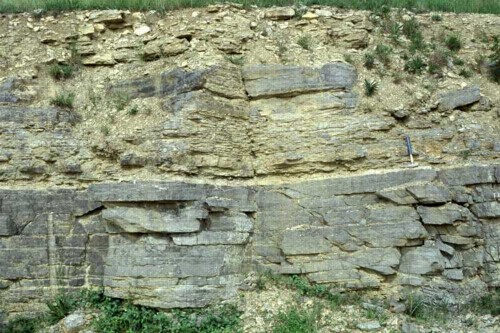
Prominent flooding surface in carbonate strata, separating overlying argillaceous and thin-bedded deep-subtidal facies from underlying bioturbated and thicker-bedded shallow-subtidal facies. Middle Ordovician Chickamauga Group, Fort Oglethorpe, Georgia.
Flooding surfaces may also exhibit small scale erosion, usually of a meter or less. Flooding surfaces may be mantled by a transgressive lag composed of shells, mud rip-ups, or calcareous nodules; such lags are usually thin, less than a meter thick. Flooding surfaces may display evidence of firmgrounds, such as Glossifungites ichnofacies. In carbonate environments, flooding surfaces commonly have hardgrounds that may be bored, encrusted, or mineralized.
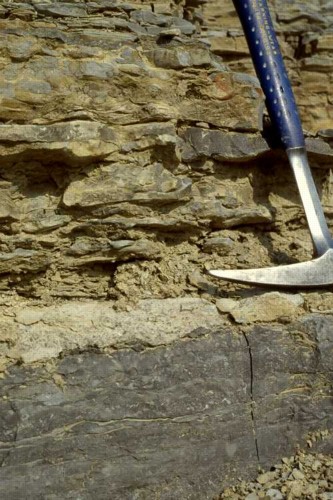
A thin transgressive lag from the flooding surface shown above. The light color of the lag beneath the hammer head comes from the abundance of quartz sand and bioclastic components. Middle Ordovician Chickamauga Group, Fort Oglethorpe, Georgia.
Origin and Scale
A parasequence represents a single episode of progradation, that is, the seaward movement of a shoreline. This seaward shoreline movement produces the familiar shallowing-upward succession seen within parasequences. The shallowing-upward succession indicates that accommodation space was filled more rapidly than it was created.
Flooding surfaces represent a relative rise in sea level, such that accommodation space is being created at a faster rate than it is being filled with sediment. Although these rapid rises in accommodation space are commonly attributed to eustatic sea-level rise, some flooding surfaces are clearly attributable to earthquake-induced subsidence or to delta switching or similar autocyclic mechanisms.
Some evidence suggests that most accommodation was generated during the formation of the flooding surfaces, rather than during the body of a parasequence.
Scale is not part of the definition of a parasequence. However, parasequences are commonly meters to tens of meters thick and they commonly represent durations of tens to hundreds of thousands of years. Many authors confuse these typical scales with the definition of a parasequence, and erroneously assume that any small cycle must be a parasequence and that any long or thick cycle cannot be a parasequence. This is not the case as some meter-thick cycles clearly do not have a parasequence structure and some hundred to thousand meter-thick cycles do display a parasequence structure.
Lateral and Vertical Relationships within a Parasequence
One of the most powerful aspects to recognizing parasequences is understanding and applying the predictable vertical and lateral facies relationships within parasequences. As stated earlier, facies commonly reflect increasingly shallower environments upwards within a parasequence. Although a complete vertical succession of facies can be compiled from a suite of parasequences, most parasequences will display only a portion of the entire shallowing-upward succession of facies. By combining the gradual facies contacts seen in multiple parasequences, it is possible to reconstruct the entire set of depositional environments present in a region.
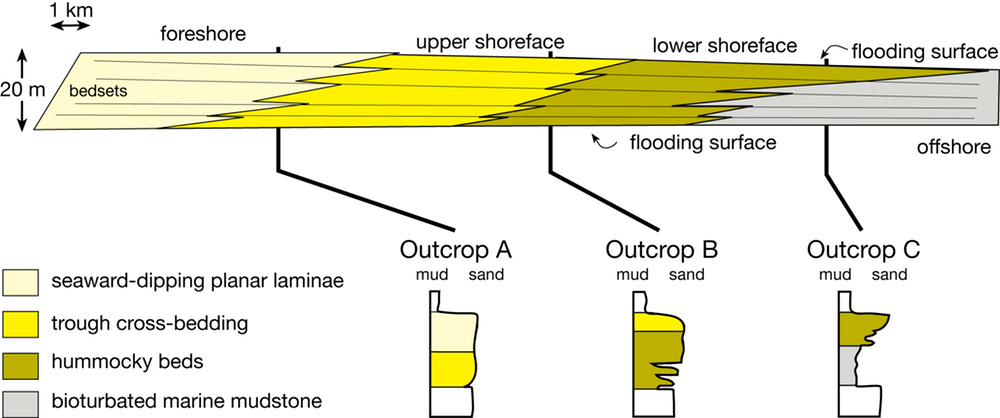
Schematic cross-section of a single parasequence along depositional dip, from landwards (left) to seawards (right). Figure adapted from Van Wagoner et al. (1990).
Shallow water-facies within a parasequence must pinch out seaward (that is, depositionally down dip). Similarly, deeper-water facies within a parasequence must pinch out landward (depositionally up dip). Because of these relationships, the facies composition of a single parasequence will not contain the same facies everywhere; instead facies within a parasequence change predictably updip and downdip. Specifically a parasequence at one location will contain a shallower set of facies in a depositionally updip (landward) direction and a deeper set of facies in a downdip (seaward) direction.
Only along depositional strike, that is, parallel to the coast, is there the potential for parasequences to exhibit largely the same facies composition. However, even along depositional strike, the facies composition of a parasequence can change, such as the alternation of river-dominated (deltaic) coasts and wave-dominated coasts.
Because parasequence boundaries (flooding surfaces) represent a primary depositional surface, that is, topography at the time of deposition, they will tend to be relatively flat but dip slightly seaward at angles typical of continental shelves. In a stratigraphic cross-section, flooding surfaces will often tend to be flat or dip slightly seaward as a result.
Parasequence boundaries necessarily have a limited extent. Landward, parasequences may not be traceable beyond the zone of marine influence, and they may therefore become obscure within a set of coastal-plain strata. Seaward, water depths may become too great to express a facies change at a flooding surface. In both cases, flooding surfaces pass laterally into correlative conformities, surfaces that correlate to flooding surfaces but that lack any physical expression.
